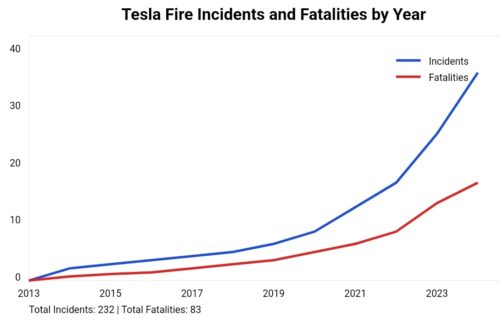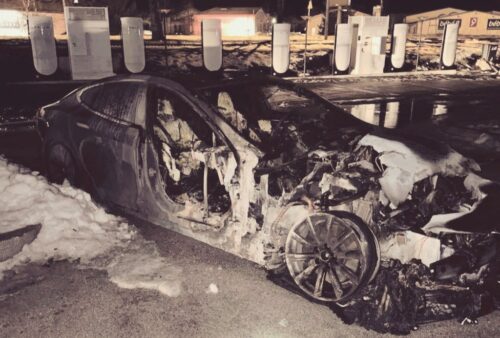A total loss! No explanation!
Here’s a sobering fact. The most frequent cause of combustion engine fires consistently has been… electrical systems. We’ve known this forever.
Anyone saying “but combustion fires” should be made aware they are still talking about electrical systems.
It’s thus obvious to any reasonable engineer that a rushed EV market would inherit known electrical fire risk and need to improve necessary safeguards or experience a predictable disaster.
This is the recurring theme of Tesla owners, year after year, month after month, and now day after day. Not Chevy, not Nissan, not Subaru, not Mercedes, not Hyundai… the list goes on and on. And then there’s the obvious exception known as Tesla.

Why does anyone buy a Tesla? Are they just to die for?

It’s perhaps like asking why anyone casts a vote for the very angry man who promises a special safe zone just for you! I mean it’s like asking why anyone believes a fat wolf’s lie that piggies who leave the solid engineering of a brick house for a new straw hut won’t experience sudden “unexplained” fires.
On Sunday, 5 January, around 7 p.m., the firefighters intervened in the car park of the Intermarché in Pontarlier for an electric car. Parked at a Tesla charger, without a passenger on board, a Tesla caught fire for as yet unknown reasons.
Unknown reasons? Did the Pinto have design flaws? The reasons are known. It’s a Tesla.

Tesla fires stay in headlines over and over again because of regular failures in the company’s most basic safety engineering. This is not really about risk from EV ownership, or even cars, it’s about a failure of the market to stop a company that wouldn’t exist without fraud.
Related yesterday news: Scotland Tesla Suddenly Engulfed in Fire

